#Vittorio Accardi
Explore tagged Tumblr posts
Photo
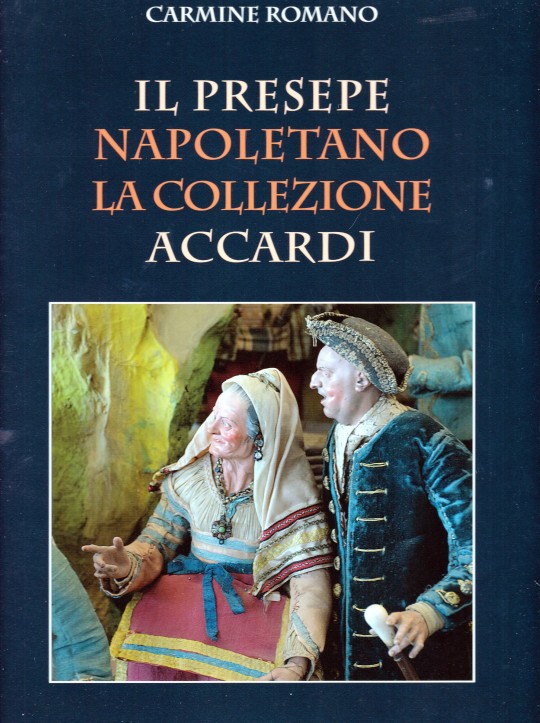

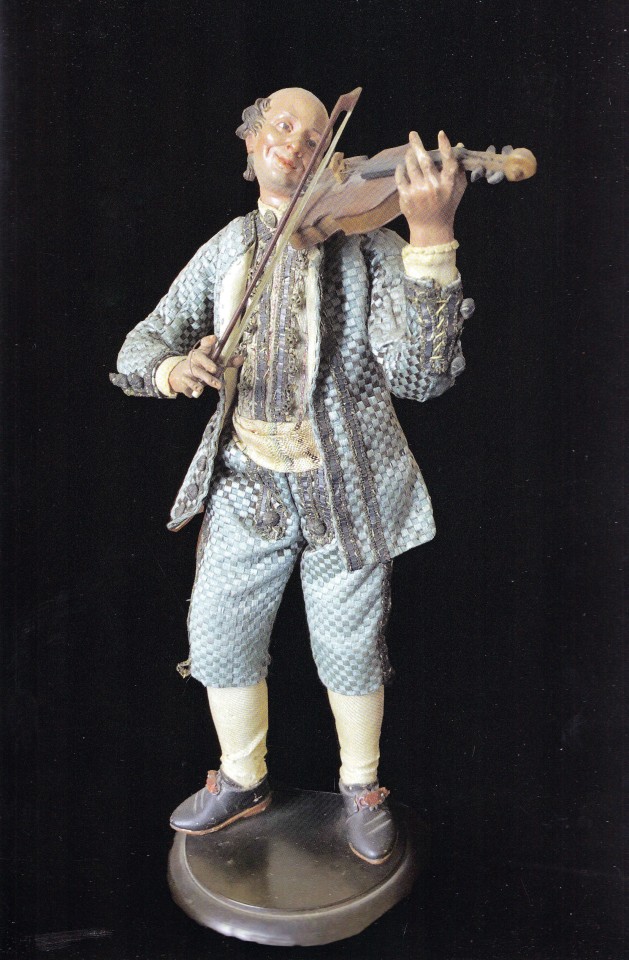

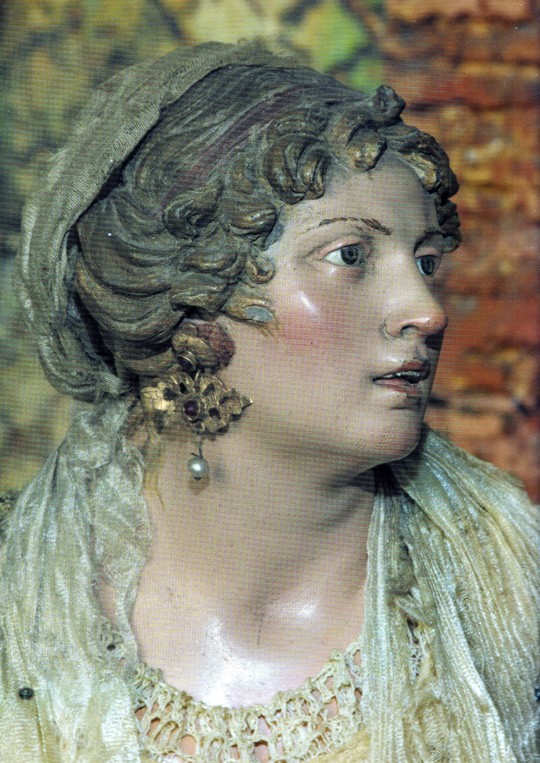
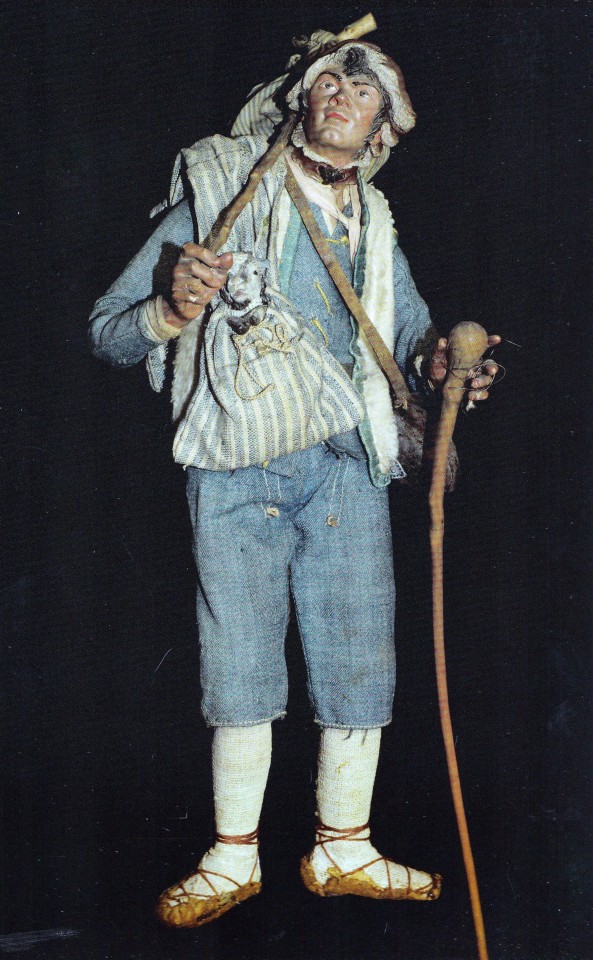



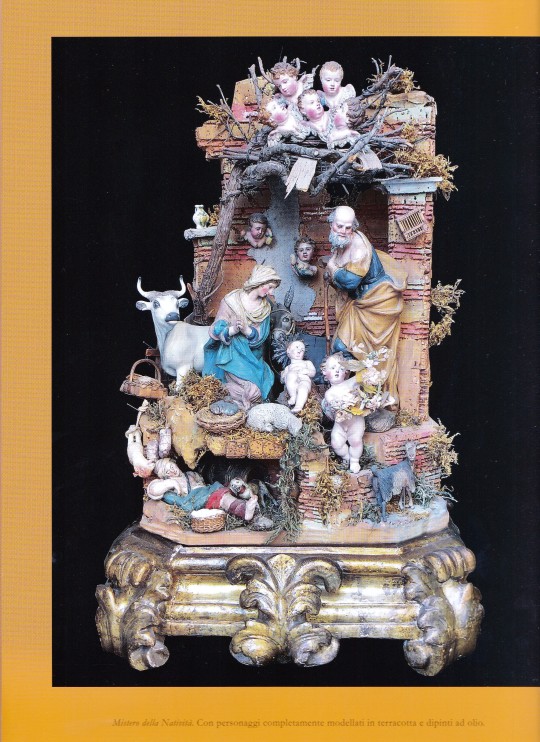
Il presepe Napoletano
La collezione Accardi
Carmine Romano
Grimaldi Editori, Napoli 2018, 140 pagine, oltre 100 ill.colori, 25 x 34,6, Legatura editoriale in tuttatela con sovracoperta, ISBN 978-8898199785
euro 70,00
email if you want to buy [email protected]
Vittorio Accardi fu il primo, in una famiglia colta ed educata all'arte, a dedicarsi al collezionismo presepiale. Lo fece con tale rispetto e amore, che la sua collezione può essere inserita tra le ultime degne di nota create nella seconda metà del '900. Ci riuscì entrando da neofita in quella cerchia di connoisseurs che hanno contribuito nel XX secolo, alla ripresa dell'interesse per questa speciale forma d'arte e alla sua evoluzione. Erano suoi amici i fratelli Catello, Raffaello Causa, Tommaso Leonetti, Gennaro Borrelli, Antonio Perrone, Alfonso Laino. Nomi importanti per gli appassionati di presepe, che evocano un mondo lontano, fatto di conoscenza e profonda competenza. Dai ricordi del figlio Luigi, emergono i dettagli di quel periodo: Gli anni 1950 sono quelli della mia infanzia e i miei ricordi dei rapporti con mio padre in quell'epoca sono indissolubilmente legati al mondo dei pastori, degli antiquari, dei collezionisti e degli artisti. Alle sue passioni artistiche e collezionistiche erano tipicamente dedicate le domeniche e lui mi portava con sé nei suoi giri per negozi, botteghe, studi di pittori o scultori molti dei quali erano a loro volta collezionisti. Si commentavano opere in fieri o già compiute, acquisti fatti da loro stessi o da terzi, vendite di pezzi importanti, preparazioni di mostre. Certamente c'erano anche contrattazioni e acquisti, ma nella mia memoria, dopo vari decenni, questi hanno lasciato il posto alla sensazione di club, che è l'unica rimasta in me [...]. In questo ambiente, il collezionista Vittorio si forma e si educa, cercando di capire e carpire le nozioni non scritte, bensì tramandate da chi nei pastori c'era nato. Inizia ad appuntare in un album dedicato alla sua raccolta, suggerimenti, impressioni, spunti per migliorare il presepe. E poi registra meticolosamente per ogni singolo pezzo scambi, doni e acquisti, con riferimenti puntuali alle date e al prezzo. Racconta di collezioni smembrate e ci introduce in un mondo, oramai scomparso, fatto di noti appassionati, venditori, antiquari, artisti e saponari, e di pezzi da inseguire per completare questa o quella scena.
05/05/23
orders to: [email protected]
ordini a: [email protected]
twitter: fashionbooksmilano
instagram: fashionbooksmilano, designbooksmilano tumblr: fashionbooksmilano, designbooksmilano
1 note
·
View note
Text

Local silly game about unholy priests and supernatural happenings brings me great joy~
#8:11 ryker#8:11#8:11 accardi#ryker dublin#accardi florentino#dante basilio#juliek octavia#beetle#vittorio#fanart#art#8:11 vittorino#8:11 leon#8:11 beetle#8:11 dante#8:11 juliek
342 notes
·
View notes
Text
La Squadra Headcanons Part 2
Names and age
I headcanon that the names of members given in the canon are just nicknames, created by other members or picked by ones.
Pesci is the youngest here, only 21 yo. His nickname comes from his love for fishing, the team picked it for him. His real name is Timoteo Romano.
Prosciutto is 29 and his nickname is basically a randomly picked food, because he was so done, he just didn't care. He prefers being called by his real name, which is Vittorio Accardi.
Melone and Ghiaccio are both 26, but Ghiaccio was born in November, and Melone in February. Melone often makes fun of it, as he is actually older. The nickname — Melone — comes from ancient Rome, where the melon fruit meant pregnancy and fertility, picked by himself. His real name is Feliciano Carvelli. We all know where Ghiaccio's nickname came from, but his real name is Ignazio Rossini.
Formaggio's nickname came from a weird situation, where someone found a bitten cube of cheese in the fridge and everyone said that it was Formaggio's fault. His real name is Marcello Costa, and he is 24.
You will think that Illuso's nickname came from his abilities... But not this time. First of all, he is very sensitive, and basically feels it when someone breaks some glass near him, especially mirrors. At the start of his work in La Squadra, he watched Ghiaccio accidentaly hit a mirror and screamed "watch the mirror, dude!". Then the team decided to name him Illuso, later found out about his powers. His real name is Michel Dellucci and he is 25.
Sorbet and Gelatos' nicknames came from fave desserts! They named themselves after the other one's favourite. Sorbet's real name is Ottavio and Gelato's is Nico. Their last name is Adelardi, because in my headcanon they are alive and married! They deserve. If it comes to age, Sorbet is 27, Gelato is 26.
Risotto Nero is absolutely my favourite when it comes to the nicknames. At first, he was just Nero and he picked it himself, because of the edgyness. The team added Risotto, because of his habit of constantly replying "put in rice" when something broke and he was tired of the team. He didn't protest and adopted the nickname. Real name of Risotto Nero is Antonio Riviera (also my absolute fave). He is 28, as in canon.
#jojo#la squadra#vento aureo#jojo melone#jojo part 5#jojo risotto#risotto nero#jojo pesci#jojo prosciutto#jojo illuso#jojo formaggio#sorbet and gelato#jojo headcanons#Vento auero headcanons#la squadra headcanons#jojo ghiaccio#jjba headcanons#hitman team
107 notes
·
View notes
Text
Candidati elezioni regionali Piemonte 2019: Democrazia Solidale
Democrazia solidale è uno delle 7 liste per Chiamparino presidente. Della coalizione fanno parte anche Partito Democratico, Liberi Uguali Verdi, Moderati per Chiamparino, Italia in Comune, Chiamparino per il Piemonte del Sì, +Europa Sì Tav. Candidati di Democrazia Solidale: Elena Apollonio Alfredo Monaco Antonella Accardi Vittorio Angela Grazia Baroni Gianluca Beruto Michele Buonanno Marco Crema... Per il contenuto completo visitate il sito http://bit.ly/1tIiUMZ
da Quotidiano Piemontese - Home Page http://bit.ly/2Jsndcw via Adriano Montanaro - Alessandria
0 notes
Link
URBINO – Si apre, domani martedì 31 ottobre, nelle Sale del Castellare del Palazzo Ducale la mostra “Enrico Ricci. Personale di pittura e incisioni”. L’inaugurazione è in programma alle ore 17, mentre l’esposizione rimarrà aperta al pubblico fino al 26 novembre 2017 (orari: feriali 15 – 18 / festivi, sabato e domenica 10 – 13 / 15 – 18. Chiuso il martedì). La mostra è organizzata a cura dell’Assessorato alla Cultura del Comune di Urbino.
Scrive Vittorio Sgarbi nel catalogo che accompagna la mostra: «Nascere e vivere a Urbino. Un privilegio e un esilio. Una lenta pazienza e anche una consolazione. Ma Urbino è un punto di vista sul mondo, e Urbino guarda il mondo. Così, chi ha vissuto un’esperienza d’arte in questa città ha goduto di un beneficio e deve restituire alla comunità una parte della sua felicità visiva, come tocca ora a Enrico Ricci, cui l’amministrazione comunale chiede di mostrare i dipinti e le incisioni maturate in questi anni di fedeltà e di esilio.
Senza andarsene, restando fra le mura, nelle stanze riparate dello studio, a meditare e a dipingere. Un esilio in patria, e il dolore per ciò che, trascurato, è perduto. Urbino città del Rinascimento e città segreta. Dove perdersi e ritrovarsi. Ricci si ritrova, dove è stato solitario a meditare fuori del rumore del mondo, ma con un rumore assordante nella propria mente febbrile.
Entriamo a Palazzo Ducale e vediamo come sono germinati i pensieri di un artista che, guardando tanta meraviglia intorno, ha fatto un percorso interiore ricco e tormentato, e ci ha rivelato la sua anima. Attratto dalla natura, Ricci elabora un informale naturalistico che dialoga con Pollock e con Dorazio, con Wols e Carla Accardi, nella lingua delle avanguardie liriche. Un diario di lunghe giornate, interminabili e interminate. Nella mostra le ritroviamo tutte».
Enrico Ricci è nato a Urbino nel 1925. Ha studiato incisione presso l’Istituto Statale d ’Arte di Urbino. Ha insegnato disegno di figura, incisione e disegno animato nello stesso Istituto sino al 1982. Ha tenuto mostre personali e partecipato a rassegne nazionali e internazionali; in particolare ha conseguito il 1 ° premio alla Rassegna Nazionale di Pittura, Scultura e Grafica “ Premio Marche ” del 1964 ed ancora il 1 ° premio al Premio Marche Nazionale dell’Incisione Contemporanea di Fabriano nel 1966 . Ha partecipato alla Biennale di Venezia nel 1972 e nel 2011. Numerose anche le sue collaborazioni con gli scrittori. Mario Luzi dedica a Enrico Ricci il racconto Le nuvole (Brescia 1991).
The post Urbino, si inaugura la mostra “Enrico Ricci. Personale di pittura e incisioni” appeared first on TM notizie - ultime notizie di OGGI, cronaca, sport.
0 notes
Text
Hyperallergic: Seeing 1970s Italy Through Its Subversive Public Broadcasting Network
Raffaella Carrà, Canzonissima 1970 (1970) (courtesy Rai Teche)
MILAN — Italy, 1978. TV personality Raffaella Carrà reaches the top of several European and South American charts with her hit “Tanti Auguri,” a song extolling free love, whose most famous line can be translated into something like, “It’s fantastic to make love, all the way from northern to southern Italy.”
In May of the same year, the Red Brigades, a left-wing terrorist organization, kidnapped and murdered Christian Democratic politician and former Prime Minister Aldo Moro. Images of his corpse found on a street in the center of Rome are broadcast on television.
Between the radical 1960s and the hedonistic 1980s, Italy went through a traumatic period of political turmoil and social change. The decade known as Years of Lead (Anni di Piombo) was marked by many heinous acts of terrorism, from the bombing of Piazza Fontana in Milan (1969) to the massacre at Bologna’s train station (1980). Going against a traditionally patriarchal and catholic society, feminists fought many difficult battles during this period, obtaining a divorce law in 1970 and achieving the legalization of abortion in 1978.
Throughout it all, Italian television informed the public about all the news, as well as providing endless entertainment to the masses.
Filmmaker and artist Francesco Vezzoli has rounded up the contradictions of that decade as seen through the television screen in the exhibition TV 70: Francesco Vezzoli Guarda la Rai, currently on view at Fondazione Prada, Milan. In his characteristically playful way, the artist has brought together works of art and archival material from TV programs of the 1970s, melding them into a personal narration of the culture, politics, and entertainment of the period.
Although the first private TV stations were starting to emerge, during the 1970s Italian TV was still dominated by Rai (Radiotelevisione Italiana), the country’s national public broadcasting company. Rai stood out for its high-quality content as well as excellent production values and a great deal of experimentation. The company hired some of the best intellectuals and film directors of the time as authors and collaborators, from poet Giuseppe Ungaretti to directors Federico Fellini and Michelangelo Antonioni. It was a television network that benefited from a rare freedom of expression, opening up subjects and themes that had previously been excluded from representation, such as women and young people, physicality and sex.
Oreste del Buono, Federico Fellini, and Vittorio Bruno at Cinema 70 (1970) (image courtesy Rai Teche)
In the exhibition catalogue, Vezzoli describes his exhibition with an acute statement:
This project has been a voyage into my past but also into the collective memory of a generation whose sensibilities were shaped in front of a television screen. In Italy, 1970s television was like a sung mass in the cathedral: In an era without video tape recorders, it was an event you either showed up for or missed. And this was true as much for the news as for entertainment.
Conceptually, TV 70 is divided into two gendered halves. The first part, visually dominated by black-and-white — color TV would not come to Italy until 1977 — showcases the male dominance of culture and information of the time. Visitors enter the show by stepping into a sanctuary dedicated to the established 1970s art world. Dramatically lit works by the likes of Giorgio de Chirico, Michelangelo Pistoletto, Alighiero Boetti, and Alberto Burri are spaced out amid projections of historic documentaries about those artists. In a tongue-in-cheek move, these films — one for each artist — are all playing at once, creating a cacophony that well represents the struggle for attention, the egocentrism, and the machismo that distinguished these men and their milieu.
TV 70: Francesco Vezzoli guarda la Rai, installation view (photo by Delfino Sisto Legnani and Marco Cappelletti; courtesy Fondazione Prada)
Vezzoli reminds visitors of the extremely experimental character of Italian TV during the 1970s through Fabio Mauri’s Il televisore che piange (The Crying Television, 1972). In what Mauri calls a “happening,” the artist leaves the TV screen blank for 12 seconds, accompanied only by the sound of crying and lamentations. At the end of it, the artist appears to explain the performance, in a very didactic way, as a symbolic action addressing the importance of the television screen, giving a great lesson about clarity to any TV art critics to come.
Moving forward through the exhibit, the heavy atmosphere of the Years of Lead is represented by a black corridor full of monitors transmitting news of the tragedies and terrorist attacks that marked 1970s Italy. One after another, the viewer is assailed by news of kidnappings, killing of magistrates, jurists, and journalists, and train bombings. This time, the overlapping audios enhance the sense of claustrophobia and disorientation of the time. One can’t help but notice the markedly male presence on the TV screens — not only because the broadcasters were all male, but because the objects of all these atrocities were male as well, from former Prime minister Aldo Moro to writer Pier Paolo Pasolini.
TV 70: Francesco Vezzoli guarda la Rai, installation view (photo by Delfino Sisto Legnani and Marco Cappelletti; courtesy Fondazione Prada)
Leaving this corridor, the exhibition continues to its second half, which is distinguished by a strong female component and a lighter tone. After a room where TV extracts about Italian feminists and civil rights are accompanied by a selection of works by Carla Accardi, one of the few female Italian artists to reach a certain degree of notoriety, Vezzoli gives space to Italian TV’s historical divas. From this point on, TV 70 becomes a joyful and colorful reunion of personalities who are still dear to the public today.
An extract from a popular episode of Milleluci (1974), the first Rai variety show to be presented by two women, shows hosts Raffaella Carrà and Mina next to the Kessler twins, singing a song making fun of male sexual appetite. Only four years later, Ilona Staller, a.k.a. Cicciolina — the first woman to bare her breasts on Italian national TV — entertained her public dressed up as a provocative nymph.
Vezzoli draws deeply from the wealth of Rai’s historical archives, setting mental associations and recollections free, unapologetically mixing high and low culture. More importantly, he gives space to forgotten or lesser-known female artists who tirelessly worked to affirm themselves in a hyper-masculine culture.
Singer Patty Pravo appears in all her androginity in a music clip from 1978 that feels very contemporary. In the same room, Lisetta Carmi’s photographs from the series I Travestiti document the life of transgender people in Genoa as early as 1965, Grace Jones showers in a bikini while singing the popular Neapolitan song “Anema e core,” and photographic portraits of famous actresses, writers, and socialites by Elisabetta Catalano make a photographic catalogue of female personalities of the time.
TV 70: Francesco Vezzoli guarda la Rai, installation view (photo Delfino Sisto Legnani and Marco Cappelletti; courtesy Fondazione Prada)
At the end of the exhibition, Vezzoli’s tribute to Italian TV sublimates channel-surfing in a surreal crafted video collage featuring, among others, Mina, Raffaella Carrà and Mother Teresa, French singer and onetime Salvador Dalí muse Amanda Lear, actress Gina Lollobrigida, and the late theatre actor Paolo Poli, famous for his witty performances in En travesti.
While it’s clear that Vezzoli had fun working on this exhibition, the message behind it is less immediate. With his video montages, the artist has created not only a powerful homage to the history of Rai but has also left some hints to his personal poetics and system of beliefs. TV 70 samples society in a particular place and time, showing the established worlds of art and politics, rigid in their structures of power and representation, in total contrast with entertainment, the key to accessing the underground and progressive elements of culture.
Ilona Staller, C’era due volte (1980) (courtesy Rai Teche)
Certain revolutions happen slowly, far from the centers of power, at the margins of established culture. Concealed under the label of “entertainment,” Carrà’s moves, Mina’s song lyrics, and the myriad other similar expressions on TV were, in truth, absolutely radical and forcefully subversive, contributing to changing and shaping Italy’s modern sensibility.
TV 70: Francesco Vezzoli guarda la Rai continues at Fondazione Prada (Largo Isarco, 2, 20139 Milano) through September 24.
The post Seeing 1970s Italy Through Its Subversive Public Broadcasting Network appeared first on Hyperallergic.
from Hyperallergic http://ift.tt/2tisNDi via IFTTT
0 notes
Text
sede: Studio Medina (Roma).
In esposizione lavori inediti su carta del pittore siciliano. Si tratta di una sequenza che, attraverso l’uso di acquerelli, oli e tecniche miste, racconta la natura osservata con gli occhi dell’artista siciliano: una natura mutevole e inquieta, che a Salafia appare come una visione: ne coglie prima la più salda materialità, fermata da cromie compatte e sature, per poi trascenderne la molteplicità delle forme attraverso la distensione dei profili, la rarefazione dei colori, la leggerezza degli spazi. Fabio Salafia non dipinge una realtà materiale, dipinge piuttosto una percezione fisica, che, superando i confini dello spazio sensibile, si apre al totalmente altro e, in una progressione di delicata luminosità, giunge in territori dove la materia non esiste più, dove il tempo sembra fermarsi, dove l’esperienza umana si dilata e diventa multipla.
Fabio Salafia (Grammichele 1979) vive e lavora a Roma. Fin dai primi lavori, si profila il suo interesse fondamentale per il paesaggio, affrontato nel tempo con diverse tecniche, l’olio, il pastello, l’incisione, e indagato nella soggettività delle percezioni della natura, come essenziale traduzione d’una emozione. Le chiavi d’accesso all’universo pittorico di Salafia vanno infatti ricercate proprio nelle regioni stratificate dell’io, come comprova un ulteriore filone della ricerca dell’artista, votata al volto umano, all’espressività infinita dello sguardo. È un viaggio, quello di Fabio Salafia, che si propone quale meta ultima l’anima, il nucleo caldo delle cose naturali e delle cose dell’uomo, in un discorso stilistico finissimo, che percorre con sapiente equilibrismo il difficile confine tra figurazione e volontà d’astratto, con una tenace attenzione alle fascinazioni sprigionate dalla consapevole amministrazione della materia pittorica. Il cursus espositivo comincia nel 2002 e si dispiega in seno a mostre collettive, oltre cento, nel territorio nazionale, quindi in una collana di personali, la cui prima, Equazioni visive, viene ospitata dalla Galleria degli Archi di Comiso ed illustrata da un catalogo con la prefazione di Piero Guccione. Tra i numerosi riconoscimenti ottenuti negli anni, si segnalano: 4ª Biennale Internazionale di Pittura, Premio Felice Casorati, Pavarolo (To); Concorso internazionale di Pittura “Giuseppe Gambino 2015”, Chiostro della Chiesa di Madonna dell’Orto, Venezia; Premio Nazionale delle Arti, edizione 2005, Museo degli Strumenti Musicali, Roma, 2006; “20×20”, Galleria Beukers, Rotterdam (Olanda), 2004; 8ª edizione “Prima Parete in Concerto”, Complesso Le Ciminiere, Catania – Cantieri Culturali Zisa, Palermo; “Il Cantico dei Cantici”, Palazzo della Signoria, Jesi (An), 2005; Premio “Terna 01”, Roma (sez. online), 2007; 2ª edizione “La terra ha bisogno di uomini”, Reggia di Caserta, 2009; 47ª biennale Mostra nazionale di pittura contemporanea, Santhià (Vc). Del 2010 è “Aspetti di Arte astratta” nella raccolta “Fiocchi”, Palazzo Forte Malatesta (Ascoli Piceno) che ospita, assieme a Salafia, artisti del calibro di Accardi, Balla, Capogrossi, Calabria, Vespignani, Morlotti, Festa, Schifano, Fontana, Burri. Di recente è stato invitato da Vittorio Sgarbi alla mostra itinerante “Artisti di Sicilia”. Tra le ulteriori opere, menzioniamo il polittico “A San Sebastiano”, realizzato su committenza per la chiesa di San Sebastiano di Palagonia (CT), esitato nel 2007. Autore delle mostre personali: Geografie del cuore; Secondo Natura; Movimenti della natura; Nei luoghi dell’intimo; La natura instabile; Equazioni Visive. Tra le voci critiche che hanno scritto di Fabio Salafia, Paolo Nifosì, Piero Guccione, Francesco Brancato, Armando Ginesi, Valentina Falcioni, Riccardo Passoni, Tiziana Rasà, Giuseppina Radice, Paolo Giansiracusa, Marco Di Capua, Sebastiano Gesù, Elisa Mandarà.
#gallery-0-4 { margin: auto; } #gallery-0-4 .gallery-item { float: left; margin-top: 10px; text-align: center; width: 25%; } #gallery-0-4 img { border: 2px solid #cfcfcf; } #gallery-0-4 .gallery-caption { margin-left: 0; } /* see gallery_shortcode() in wp-includes/media.php */
Fabio Salafia. Trascendenze multiple sede: Studio Medina (Roma). In esposizione lavori inediti su carta del pittore siciliano. Si tratta di una sequenza che, attraverso l'uso di acquerelli, oli e tecniche miste, racconta la natura osservata con gli occhi dell'artista siciliano: una natura mutevole e inquieta, che a Salafia appare come una visione: ne coglie prima la più salda materialità, fermata da cromie compatte e sature, per poi trascenderne la molteplicità delle forme attraverso la distensione dei profili, la rarefazione dei colori, la leggerezza degli spazi.
0 notes
Text
Something angsty on my mind


Valentina Accardi - sister of Vittorio Accardi.
1 note
·
View note